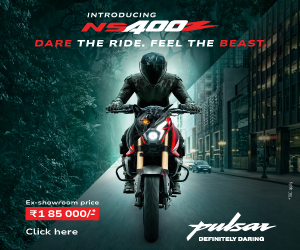Mahindra Racing has launched an Android based mobile application, for fans to stay up-to-date with all of Mahindra Racing’s latest activities and results. [Read more…] about Mahindra Racing launches Android based mobile application
Bike Reviews in India
Batman’s backpack
Admit it freely or not, we have all wanted to emulate our favourite superheroes at some point or the other. [Read more…] about Batman’s backpack
First Ride – Bajaj Kawasaki Ninja 300
Upping the ante, the Bajaj-Kawasaki alliance have recently launched the Ninja 300, powered by a larger capacity 296-cc parallel-twin, liquid-cooled engine with fuel injection, along with refreshed styling and improved chassis. [Read more…] about First Ride – Bajaj Kawasaki Ninja 300
KTM 1190 Adventure Road Test
The KTM 1190 Adventure took no time in demonstrating to us that it possessed an unmatched combination of road-going performance and off-road ability as we rode it on a zigzag mountain road in the south of Tenerife recently. And it still had more of its versatility for us to experience as we rode on [Read more…] about KTM 1190 Adventure Road Test
2013 BMW R1200GS Road Test
It was at George, on the coast near Cape Town, that we rode the first BMW R1200GS at the time of its launch nine years ago. Now the locale remains the same, but the bike is a vastly improved 2013 version [Read more…] about 2013 BMW R1200GS Road Test

